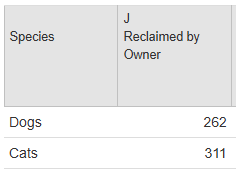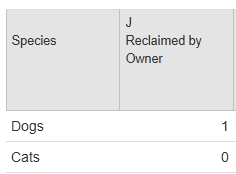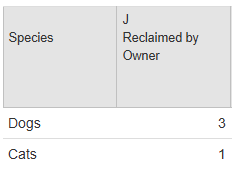PETA death toll tops 50,000
In 2024 alone, over 2,000 animals — roughly six animals a day, every day — were killed by PETA staff; with thousands more sent to local pounds
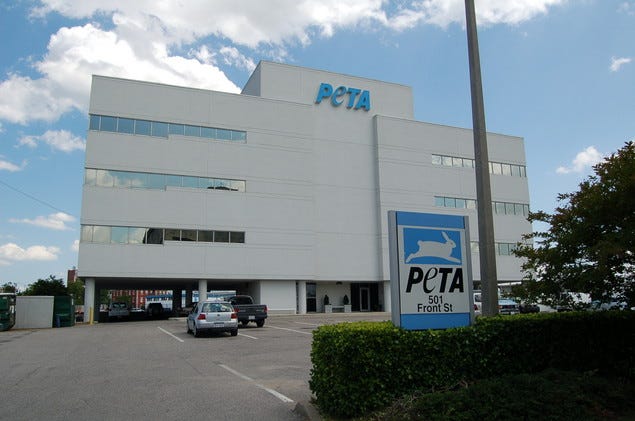
The vast majority of PETA supporters are almost certainly unaware that their donations helped pay for the roundup and killing of healthy kittens and puppies, the theft and killing of beloved dogs, efforts to kill more animals in pounds, the defense of abusive “shelter” workers, or a mobile death van — a slaughterhouse on wheels.

PETA officials believe that sharing one’s home with an animal subjects them to bondage and oppression:
Let us allow the dog to disappear from our brick and concrete jungles — from our firesides, from the leather nooses and metal chains by which we enslave it.
Employees also reported that they were made to watch “heart-wrenching” films about animal abuse designed to brainwash them into believing that people are incapable of caring for animals. They are then told that animals cannot survive outside a home. Thus, the animals are damned either way and killing them is a “gift.” In the words of Ingrid Newkirk, PETA’s founder, it is “the greatest gift of all.”
To that dystopian end, in 2023, PETA staff killed, on average, more than seven animals a day, every day for the entire year. That is thousands of animals (2,559), a significant increase from the prior year. And until the Commonwealth of Virginia released PETA’s statistics for 2024 on Friday, we knew that PETA killed 48,835 dogs and cats to date and sent thousands more to be killed at local pounds that we know of. The number may be many times higher.
According to an employee whose job it was to acquire animals to kill:
I was told regularly to not enter animals into the log, or to euthanize off-site in order to prevent animals from even entering the building. I was told regularly to greatly overestimate the weight of animals whose euthanasia we recorded, in order to account for what would have otherwise been missing ‘blue juice’ (the chemical used to euthanize); because that allowed us to euthanize animals off the books.
A second PETA field worker also admitted that PETA routinely rounded up and killed healthy animals, including lying to people to acquire their animals.
Running what appears to be the functional equivalent of a slaughterhouse has not earned PETA any friends or accolades. How could it? Who loves a political death cult outside of the people in the cult? But when releasing their 2024 statistics last week, PETA opted to report numbers in a new way that appears to downplay the abhorrent rate of killing by making it appear that their placement rate is higher than it may actually be.
Mass killing continued in 2024
In 2024, PETA reported that they killed 1,299 cats. Another 251 were transferred, primarily to pounds that also kill animals. Historically, many of the kittens and cats PETA has taken to those pounds have been killed, often within minutes, despite being young (as young as six weeks old) and healthy. And despite millions of “animal loving” supporters, a staff of hundreds, and revenues of over $79 million, PETA also admitted that they found homes for only 23 — an adoption rate of about 1%. But assuming they did not outright lie, as past employees have attested they do, this is where the clarity ends.
In 2024, PETA reported that despite only taking in five stray cats, 311 were “reclaimed by their owners.” They likewise reported that despite taking in only 14 stray dogs, 262 were reclaimed. Are these actual reclaims, or is something else going on?
Compare the 311 cat and 262 dog “reclaims” to past years.
In 2023, PETA took in four stray cats and four stray dogs, reporting no cats and only one dog reclaimed.
In 2022, PETA took in 10 stray cats and seven stray dogs, reporting one cat and three dogs reclaimed.
How did the number jump to 311 cat and 262 dog reclaims without dramatically increasing the number of strays impounded?
Is PETA’s new reporting scheme designed to obscure?

One clue is that PETA added a new category of intakes under its Community Assistance Program (CAP). PETA told the Virginia Department of Agriculture, which collects the annual statistics, that these animals were taken in “for safekeeping,” though animals are safer away from PETA than with them.
CAP is the agency within PETA primarily responsible for the roundup and killing of animals. The two staff whistleblowers noted above who reported lying to people to acquire and kill animals and killing animals “off the books” worked in CAP. Other whistleblowers I interviewed for Why PETA Kills, my book, also worked in CAP.

I considered requesting the intake and disposition records from PETA, but they have never responded to my queries for records in the past. And even if they did this time around, I could not ignore their history of lying — lying to people by promising to find homes only to kill animals within minutes, lying to the public by claiming all the animals they kill are suffering, and lying to a young family that they didn’t steal and kill Maya, their dog, until confronted with surveillance video of the theft.
When I was a criminal prosecutor, we called this type of misinformation “consciousness of guilt.” We presented it to a jury as evidence of intent — that the defendant knew what they were doing was wrong.
But let’s assume all those animals were legitimately taken into custody for “safekeeping” and then legitimately “reclaimed.” The numbers are still abhorrent. And if the animals they sent to local pounds were killed, as many historically have been, or they displaced animals who were killed, that puts the cat kill rate at roughly eight out of 10 cats. Shockingly, that is an improvement for PETA, which historically killed or caused to be killed 99% of cats.
Likewise, they put to death 875 dogs.
They also killed 96% of other animal companions — 27 out of 28 rabbits and others they impounded.
That’s an average of six animals every day for the entire year. By the time the bloody year was over, the known death toll by PETA just for dogs and cats stood at 51,010, with thousands more sent to local pounds.
Enter the PETA Apologists
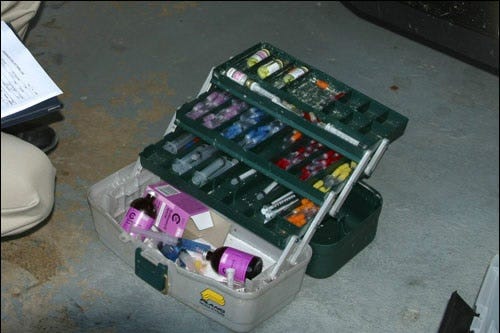
While that is enough to turn anyone’s stomach, it is not likely to convince people whose identity is wrapped up in support of PETA on social media to condemn them for it. In past years, these people argued that criticism of PETA is unfair because they do “so much good.” Indeed, PETA tries to convince people of that.
At the same time, they report the mass killings for the year; they add notes apropos of nothing relative to the state’s reporting form about the spay/neuter surgeries they offer and the free doghouses and straw bale bedding they give out. By this same logic, were a slaughterhouse owner to donate a percentage of his profits to a vegan advocacy organization or a dogfighter to donate some of his winnings to a companion animal rescue group, the killing and cruelty they inflict upon animals would be rendered acceptable, the harm being canceled out by the good.
This is an obvious absurdity, but time and again, self-professed animal lovers, animal rights activists, and even PETA itself postulate this exact scenario to defend the killing. People who genuinely love animals should have none of it.
Because for all we do not know, this much appears certain: PETA is letting loose upon the world individuals who not only believe that killing is a good thing and that the living want to die, but who are legally armed with lethal drugs, which they have already proven — at least 51,010 times — that they are not averse to using.

